| View previous topic :: View next topic |
| Author |
Message |
Gerald


Joined: 25 Mar 2014
Posts: 1196
Location: Brazil
|
 Posted: Thu Jul 24, 2014 12:58 am Post subject: Posted: Thu Jul 24, 2014 12:58 am Post subject: |
 |
|
Gerald wrote:
Out of curiosity, I did a quick-and-dirty quick experiments with a homemade apodization filter. First I drew a pattern with Photoshop and print it with a LaserJet printer on a transparency. Then I cut out the filter from the transparency sheet, mounted on a UV 55mm filter and put the "filter" on a 135mm lens.
The result? Terrible! 
The problem was not the filter itself but the transparency that diffuse light too much. I think that a B&W negative film negatives, photolithographic film, or a slide could be a little better, but not much. The biggest problem to improvise an apodization filter seems to find a proper substrate to print it.
Below the pattern I used. If printed with a 600 dpi printer it should generate a circle with diameter of 52mm.
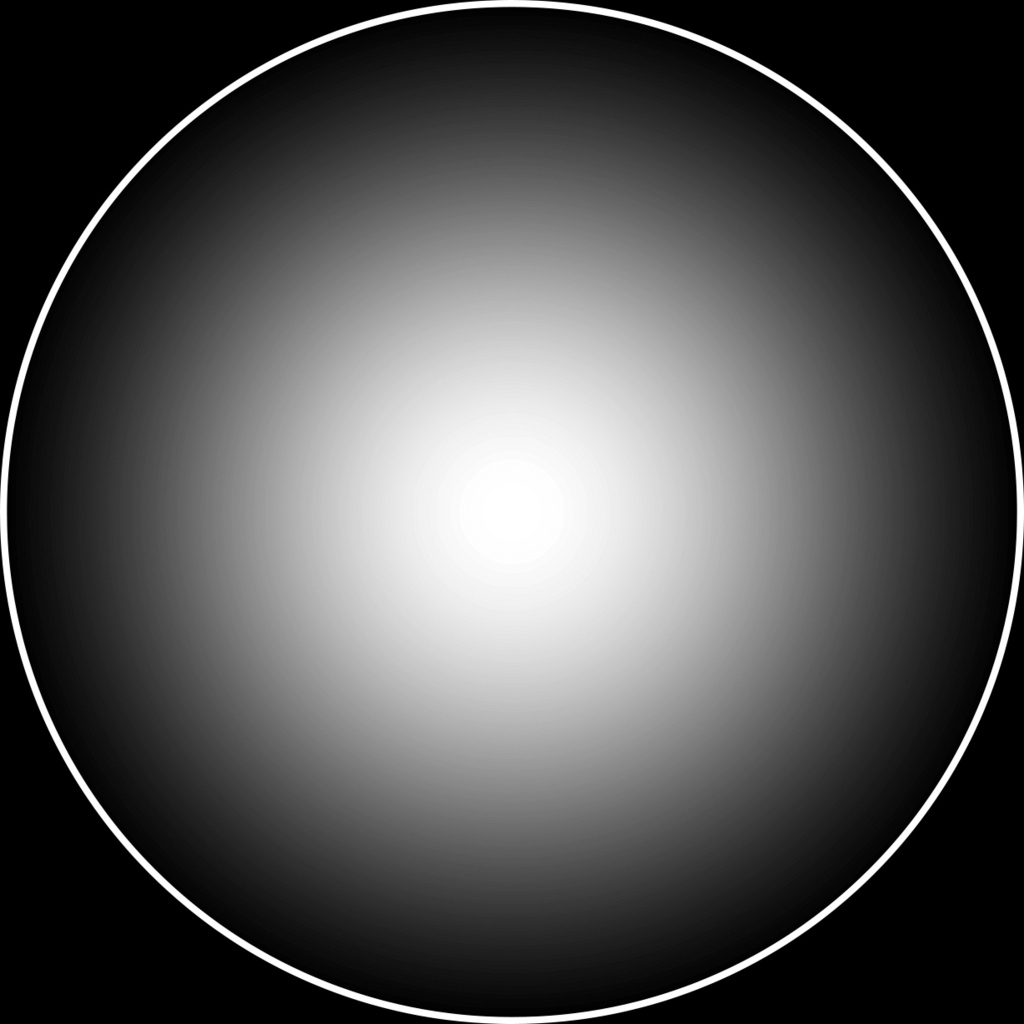
_________________
If raindrops were perfect lenses, the rainbow did not exist. |
|
| Back to top |
|
 |
ZoneV

Joined: 09 Nov 2009
Posts: 1633
Location: Germany
Expire: 2011-12-02
|
 Posted: Thu Jul 24, 2014 6:50 am Post subject: Posted: Thu Jul 24, 2014 6:50 am Post subject: |
 |
|
ZoneV wrote:
| Gerald wrote: |
| ...The problem was not the filter itself but the transparency that diffuse light too much. I think that a B&W negative film negatives, photolithographic film, or a slide could be a little better, but not much. The biggest problem to improvise an apodization filter seems to find a proper substrate to print it... |
Yes, the material is a nain factor. Wron material gives a lot of stray light.
Some stray light is acceptable for me, but I made several tests with wrong material.
_________________
Camera modification, repair and DIY - some links to look through: http://www.4photos.de/camera-diy/index-en.html
I AM A LENS NERD!
Epis, Elmaron, Emerald, Ernostar, Helioplan and Heidosmat.
Epiotar, Kameraobjektiv, Anastigmat, Epis, Meganast, Magnagon, Quinar, Culmigon, Novotrinast, Novflexar, Colorplan, Sekor, Kinon, Talon, Telemegor, Xenon, Xenar, Ultra, Ultra Star. Tessar, Janar, Visionar, Kiptar, Kipronar and Rotelar.
|
|
| Back to top |
|
 |
dan_


Joined: 05 Dec 2012
Posts: 1053
Location: Romania
Expire: 2016-12-19
|
 Posted: Thu Jul 24, 2014 8:36 am Post subject: Posted: Thu Jul 24, 2014 8:36 am Post subject: |
 |
|
dan_ wrote:
| Gerald wrote: |
Out of curiosity, I did a quick-and-dirty quick experiments with a homemade apodization filter. First I drew a pattern with Photoshop and print it with a LaserJet printer on a transparency. Then I cut out the filter from the transparency sheet, mounted on a UV 55mm filter and put the "filter" on a 135mm lens.
The result? Terrible!  |
I did this experiment too, some time ago, with the same results as yours. 
Then I've searched for a method to transfer the laser print on the glass of an UV filter.
There is a thermal method, I tried it and it broke the glass of the UV filter 
There are some chemical methods too, but I've never tried them.
This kind of transfer from a laser print is used for etching the glass and for electrical circuits (DIY).
Maybe someone knows a better method of transfer. |
|
| Back to top |
|
 |
ZoneV

Joined: 09 Nov 2009
Posts: 1633
Location: Germany
Expire: 2011-12-02
|
 Posted: Thu Jul 24, 2014 9:28 am Post subject: Posted: Thu Jul 24, 2014 9:28 am Post subject: |
 |
|
ZoneV wrote:
Additional glass inside the lens is a problem. This is a reason why I used film which is thin relative to most glass.
_________________
Camera modification, repair and DIY - some links to look through: http://www.4photos.de/camera-diy/index-en.html
I AM A LENS NERD!
Epis, Elmaron, Emerald, Ernostar, Helioplan and Heidosmat.
Epiotar, Kameraobjektiv, Anastigmat, Epis, Meganast, Magnagon, Quinar, Culmigon, Novotrinast, Novflexar, Colorplan, Sekor, Kinon, Talon, Telemegor, Xenon, Xenar, Ultra, Ultra Star. Tessar, Janar, Visionar, Kiptar, Kipronar and Rotelar.
|
|
| Back to top |
|
 |
Gerald


Joined: 25 Mar 2014
Posts: 1196
Location: Brazil
|
 Posted: Thu Jul 24, 2014 2:35 pm Post subject: Posted: Thu Jul 24, 2014 2:35 pm Post subject: |
 |
|
Gerald wrote:
| dan_ wrote: |
[I did this experiment too, some time ago, with the same results as yours. 
Then I've searched for a method to transfer the laser print on the glass of an UV filter.
There is a thermal method, I tried it and it broke the glass of the UV filter 
There are some chemical methods too, but I've never tried them.
This kind of transfer from a laser print is used for etching the glass and for electrical circuits (DIY).
Maybe someone knows a better method of transfer. |
I have built several PC boards using the tone transfer method. There are many improvised techniques described on the web but in general they are unreliable (and frustrating...). I have used a transfer paper from Pulsar Pro FX that works like a charm. It seems that the paper is coated with a kind of gelatin which dissolves in water, eliminating the major problem of tone transfer method that is detaching the toner from the transfer sheet.
An envelope with 10 sheets of Tone Transfer Paper costs $15. The transfer can be made with a common domestic iron (the method I have used).
Links to the product:
http://www.pcbfx.com/main_site/pages/products/transfer_paper.html
http://www.pcbfx.com/main_site/pages/tech_support/instructions/3_iron_calibration.html
http://www.pcbfx.com/main_site/store/index.html
I never did toner transfer to an UV filter, but I think it is perfectly possible as long as certain precautions are taken, such as taking out previously the filter glass from the metal ring.
I believe that an UV filter can resist the thermal shock from the heat of an iron, but never did that experience to know for sure.
I don't know if the tone transfer method has the precision needed to make a good gradient filter. What I know is that it is perfectly possible to make PCB tracks with some tenths of a millimeter.
Finally, if something goes wrong with the tone transfer, simply wipe with thinner and do it again.
_________________
If raindrops were perfect lenses, the rainbow did not exist. |
|
| Back to top |
|
 |
dan_


Joined: 05 Dec 2012
Posts: 1053
Location: Romania
Expire: 2016-12-19
|
 Posted: Thu Jul 24, 2014 3:47 pm Post subject: Posted: Thu Jul 24, 2014 3:47 pm Post subject: |
 |
|
dan_ wrote:
Thanks for the info, Gerald.
I think a front-mounted apodisation filter is feasible this way.
Probably the Photoshop image should be transformed in duo-tones and printed in B&W for the best results and the glass of the filter should be pre heated in order to resist. |
|
| Back to top |
|
 |
Gerald


Joined: 25 Mar 2014
Posts: 1196
Location: Brazil
|
 Posted: Sun Jul 27, 2014 8:40 pm Post subject: Posted: Sun Jul 27, 2014 8:40 pm Post subject: |
 |
|
Gerald wrote:
Sony 135mm T4.5 STF mistery solved!
What I mean by "mystery" is: Why does such an expensive lens like the Sony 135mm T4.5 STF have a performance below average in the corners?
When Kurt Munger reviewed the Sony STF, he made the following remark: "The soft corners wide open with a full frame camera are a little surprising, but look fine at F/8."
My analysis of photos taken with that lens wide open confirmed Munger's observation. If you disagree with Munger, and are really convinced that the Sony STF is a super sharp lens, you do not need to keep reading. In any case, please make sure that I do not want to belittle the Sony 135mm T4.5 lens, which I think is an interesting lens. However, it is clear to me that its design implied a trade-off between sharpness in the corners and pleasing bokeh.
The key to understand the "mystery" of the Sony STF is the following statement from the Sony Alpha lens book:
"The 135mm F2.8 [T4.5] STF has an exceptionally large diameter (72mm filter size) for a fixed focal length lens, ensuring high aperture efficiency with virtually no vignetting. Even with the aperture fully opened, defocusing is superb right up to the periphery of the image."
Excerpt from: http://www.dyxum.com/columns/articles/lenses/sal-135f28/sony-af-135-stf-sal-135f28_review.asp
Consider that a 135mm F2.8 lens requires an aperture of only 135 / 2.8 = 48.2mm, so 72mm appears to be overkill. So why does the Sony 135 STF use a 72mm filter, which is much larger than the typical 52-55mm filter used in most 135mm F2.8 lens?
The reason for Sony STF uses oversized front optical elements is to minimize vignetting.
If you take a look at the graph below you will notice that the illuminance on the Sony STF (red curve) is nearly constant across the field. In comparison, the Zeiss Sonnar 135mm F2.8 for Contax/Yashica suffers from strong light fall-off more wide open. For the Sonnar, the illuminance in the corners drops to almost 40% compared with the center.
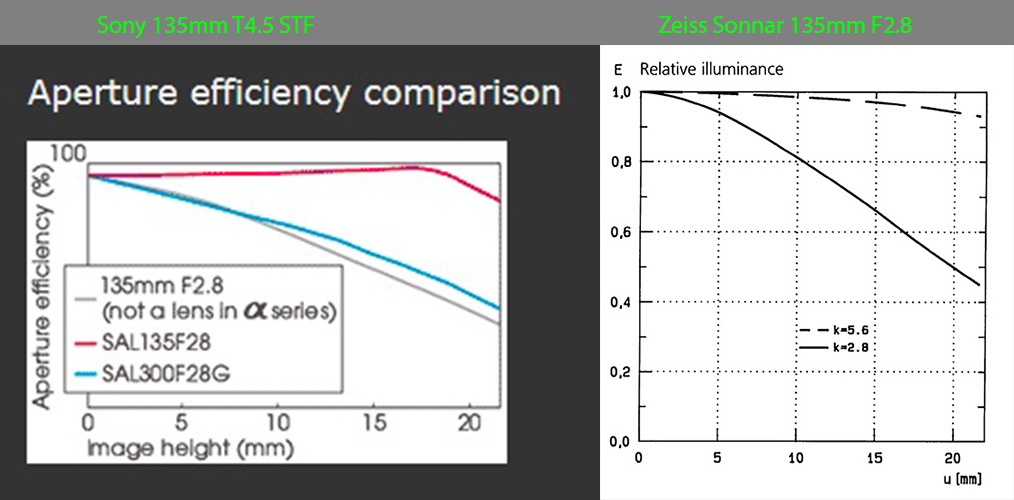
Why uniform illuminance (no fall-off) is so important in a STF lens
The best way to understand why uniform illuminance is important to a STF lens is observing how a non-STF 135mm lens renders the image of an defocused point source. Take, for example, a Pentacon 135mm F2.8 lens when wide open. The photograph below shows that the light blue point source in the center is rendered as a uniform circle, while the red point source in the corner as an oval shape due to vignetting by the front and rear lenses of moderate diameter (incidentally, the ratio between the areas of the two circles gives the relative illuminance, which is around 50% for the Pentacon lens).
Pentacon 135mm F2.8 at F2.8 (wide open):

The pictures below show the blurs when the lens diaphragm is closed to F4, F5.6 and F8. The out-of-focus images acquire a hexagonal shape as the Pentacon has a 6-blade diaphragm. The vignetting disappears completely by F8 or smaller apertures.
Pentacon 135mm F2.8 at F4:

Pentacon 135mm F2.8 at F5.6:
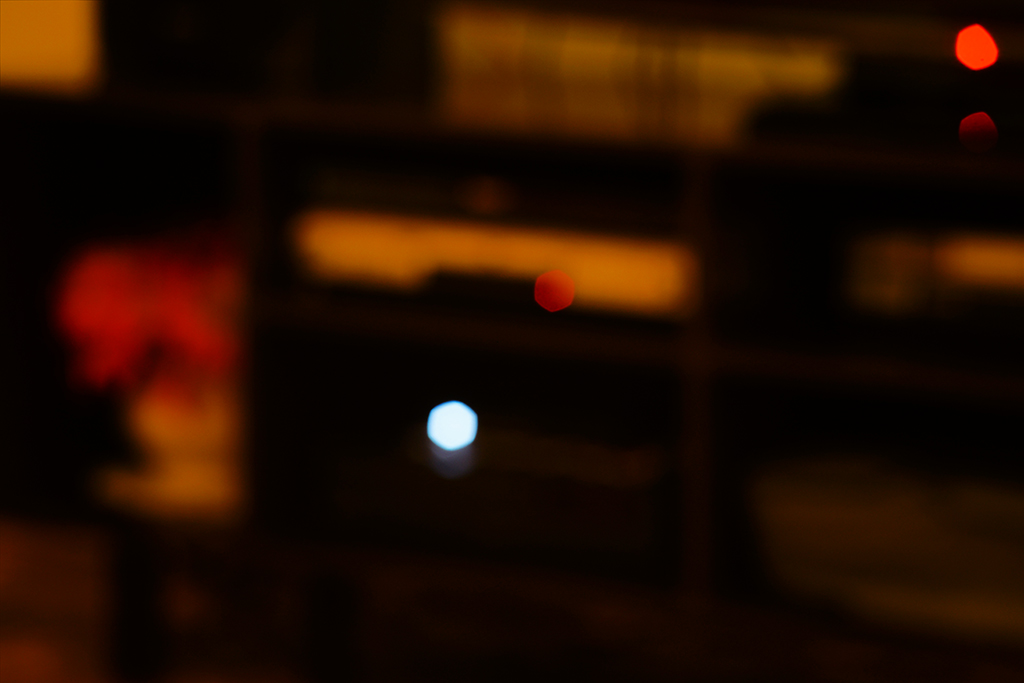
Pentacon 135mm F2.8 at F8:

A key point is to understand what happens when if STF suffers from vignetting
The figure below shows a simulation of the image of a defocused point source, as produced by a STF lens with a gradient filter. The blur at the left is for the case where no vignetting occurs (center of the frame always, or corner when there is not light fall-off). Note that the blur shape is circular and edges are fuzzy, what should produce excellent bokeh.
The blur at the right represents the defocused image of a point source in the corner for a lens that suffers from significant vignetting. Note that vignetting causes the blur to gain a well-defined boundary, which will certainly have a negative effect on the quality of the bokeh.
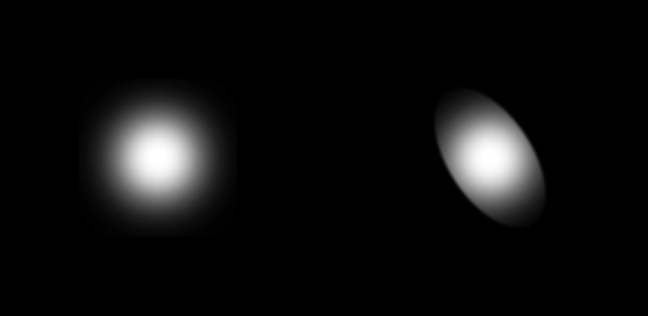
A conclusion we can draw is that an STF lens should not suffer from any significant vignetting; otherwise, the quality of the bokeh at edges and corners will be greatly impaired.
At this point, I believe it is quite clear why the designers of the Sony 135mm STF lens had to use front and rear optical elements with much larger than usual diameters. If they had not done so, vignetting would occur and the bokeh at the corners would be nothing better than an average135mm lens.
Unfortunately, the increase in the diameter of the optical elements has a price to be paied, which is the increase in the aberration at the edges and corners. Indeed, the lens designers often introduce vignetting to reduce, among other reasons, the off-axis aberrations. The vignetting is beneficial because it cuts the most oblique rays that produce the most horrible aberrations. By allowing the passage of these rays to reduce vignetting, the designer necessarily increases the level of aberrations at the edges and corners.
The Sony STF lens could produce a high-quality image at the edges and corners if the designers had used a larger number of optical elements to better correct off-axis aberrations. Unfortunately, the Sony STF lens already has 8 optical elements (two elements are to implement of gradient filter, so 6 elements are left to correction of aberrations), so adding additional optical elements would greatly increase the weight, size and cost of the lens. The designers of the Sony STF probably thought that the sacrifice of quality was acceptable for most users that think that resolution in the edges and corners is less important than a pleasing bokeh.
Just out of curiosity, I show below the pictures produced by a CZJ Biometar 120mm F2.8, whose focal length is only a little smaller than the Sony STF. Note that the shape of the blur at the corner is almost circular at F2.8, showing that the vignetting is small even for the lens wide open. For F4 on, vignetting is simply nonexistent. Hence, the Biometar 120mm would be a good candidate for implementing an STF lens.
CZJ Biometar 120mm F2.8 at F2.8 (wide open):
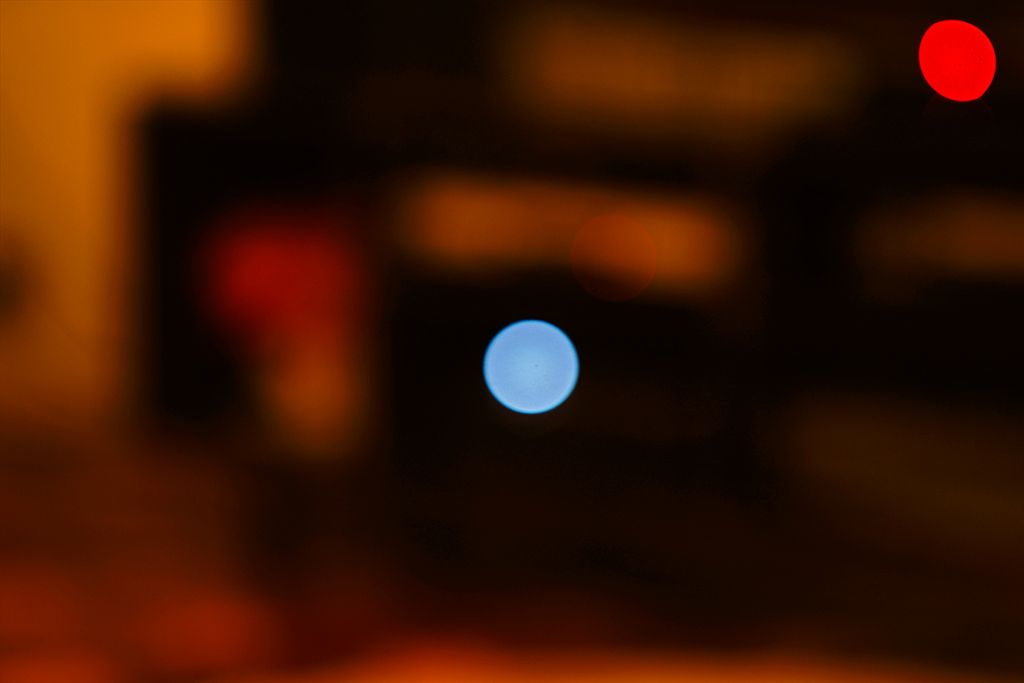
CZJ Biometar 120mm F2.8 at F4:
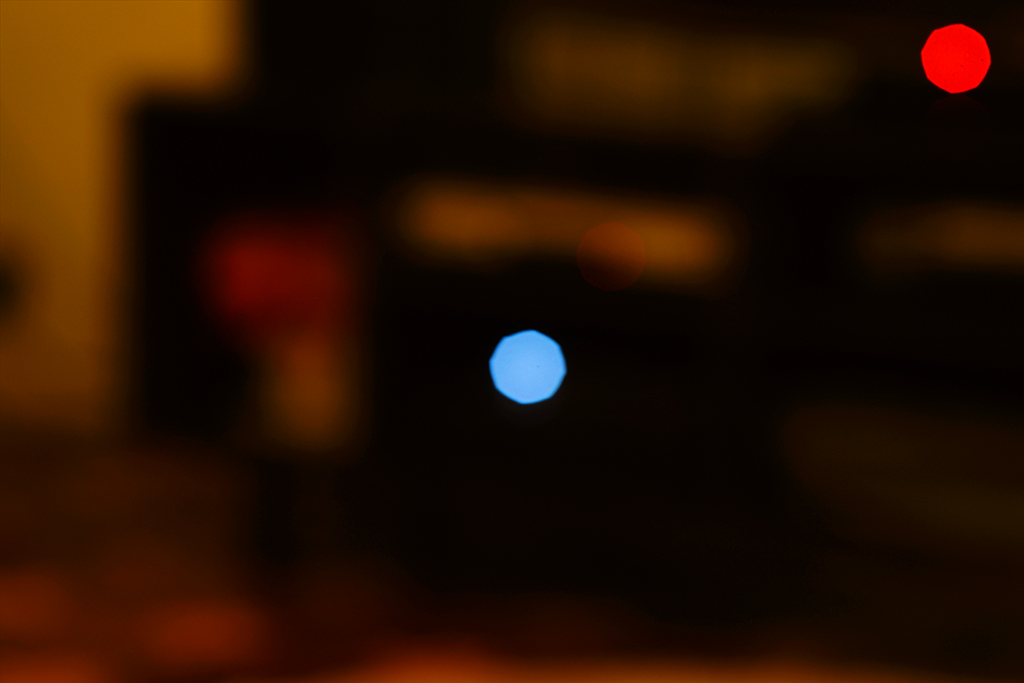
_________________
If raindrops were perfect lenses, the rainbow did not exist. |
|
| Back to top |
|
 |
calvin83


Joined: 12 Apr 2009
Posts: 7553
Location: Hong Kong
|
 Posted: Mon Jul 28, 2014 4:47 am Post subject: Posted: Mon Jul 28, 2014 4:47 am Post subject: |
 |
|
calvin83 wrote:
It is a well known fact here Minolta use oversize lens elements to reduce optical vignetting on the STF.
The Biometar is a medium format lens. The vignetting will be much less visible when it is used on 35mm camera.
_________________
https://lensfever.com/
https://www.instagram.com/_lens_fever/
The best lens is the one you have with you. |
|
| Back to top |
|
 |
dan_


Joined: 05 Dec 2012
Posts: 1053
Location: Romania
Expire: 2016-12-19
|
 Posted: Mon Jul 28, 2014 10:17 am Post subject: Posted: Mon Jul 28, 2014 10:17 am Post subject: |
 |
|
dan_ wrote:
| Gerald wrote: |
| Sony 135mm T4.5 STF mistery solved! |

Kalvin83 is right, the fact that Minolta used oversize lens elements to reduce optical vignetting on the STF is well known.
The reason why the "cat eyes" effect appears is very well (and in a simple way) explained here:
http://rafimoor.com/english/bokehe.htm (see drawing 3 and its explanation)
IMO your explanation, Gerald, seams correct with two little amendments:
- "a 135mm F2.8 lens requires an aperture of only 135 / 2.8 = 48.2mm" is not correct. The f-number N is given by N=f/D where f is the focal length, and D is the diameter of the entrance pupil; 48.2mm is not the required aperture of the a 135 / 2.8 lens but the required diameter of its entrance pupil and the entrance pupil is an image, not the diameter of the front lens.
- The image :

is not correct because the well defined boundary should only be seen on the outer side of the peripheral light spot. Its inner side, the one bounded by the aperture, will remain a smooth transition, as it is on the other light spot. |
|
| Back to top |
|
 |
Gerald


Joined: 25 Mar 2014
Posts: 1196
Location: Brazil
|
 Posted: Mon Jul 28, 2014 2:22 pm Post subject: Posted: Mon Jul 28, 2014 2:22 pm Post subject: |
 |
|
Gerald wrote:
| calvin83 wrote: |
| It is a well known fact here Minolta use oversize lens elements to reduce optical vignetting on the STF. |
If you read my post carefully you will see that I did not say I "discovered" that Sony STF lens uses oversized optical elements. Of course that was already known. Sony even bragged about it!
My point was that the use of oversized optical elements is the underlying cause of the poor resolution at edges and corners. I believe that the relation between poor performance in the edges and corners and oversized optical elements has never been discussed before, at least for the Sony STF lens.
_________________
If raindrops were perfect lenses, the rainbow did not exist. |
|
| Back to top |
|
 |
calvin83


Joined: 12 Apr 2009
Posts: 7553
Location: Hong Kong
|
 Posted: Mon Jul 28, 2014 3:06 pm Post subject: Posted: Mon Jul 28, 2014 3:06 pm Post subject: |
 |
|
calvin83 wrote:
Well, I don't know if oversized optical elements in the STF results poor at the corners. However, oversized optical elements does not necessary lead to poor corner resolution. Look at the ZEISS Otus 55mm and Sigma ART 50mm, both of them use 77mm filter and have very good corner resolution even on F1.4.
_________________
https://lensfever.com/
https://www.instagram.com/_lens_fever/
The best lens is the one you have with you. |
|
| Back to top |
|
 |
Gerald


Joined: 25 Mar 2014
Posts: 1196
Location: Brazil
|
 Posted: Mon Jul 28, 2014 3:50 pm Post subject: Posted: Mon Jul 28, 2014 3:50 pm Post subject: |
 |
|
Gerald wrote:
| dan_ wrote: |
IMO your explanation, Gerald, seams correct with two little amendments:
- "a 135mm F2.8 lens requires an aperture of only 135 / 2.8 = 48.2mm" is not correct. The f-number N is given by N=f/D where f is the focal length, and D is the diameter of the entrance pupil; 48.2mm is not the required aperture of the a 135 / 2.8 lens but the required diameter of its entrance pupil and the entrance pupil is an image, not the diameter of the front lens.
|
In my aforementioned statement, I was clearly speaking about absolute aperture, which is the diameter of the entrance pupil, not relative aperture, also called simply aperture or F-number, which is given by f / d where f is the focal distance and d is the diameter of the entrance pupil.
The diameter of the front optical element must be equal to or greater than the diameter of the entrance pupil (aperture absolute). For most telephoto lenses, the front lens diameter is practically equal to the (absolute) aperture. The Sony STF lens is an exception because it uses oversized optical front elements.
| dan_ wrote: |
- The image :

is not correct because the well defined boundary should only be seen on the outer side of the peripheral light spot. Its inner side, the one bounded by the aperture, will remain a smooth transition, as it is on the other light spot. |
In a real lens, like the Pentacon 135mm F2.8, vignetting is caused by both front and rear optical elements, which have smaller diameters than necessary to avoid vignetting. In a well done project, vignetting is more or less symmetrical. If an apodization filter is introduced into a Pentacon F2.8, which is a lens that produces more or less symmetrical vignetting, the blurs in the center and the corners are indeed like the picture below:

_________________
If raindrops were perfect lenses, the rainbow did not exist. |
|
| Back to top |
|
 |
Gerald


Joined: 25 Mar 2014
Posts: 1196
Location: Brazil
|
 Posted: Mon Jul 28, 2014 4:51 pm Post subject: Posted: Mon Jul 28, 2014 4:51 pm Post subject: |
 |
|
Gerald wrote:
| calvin83 wrote: |
| Well, I don't know if oversized optical elements in the STF results poor at the corners. However, oversized optical elements does not necessary lead to poor corner resolution. Look at the ZEISS Otus 55mm and Sigma ART 50mm, both of them use 77mm filter and have very good corner resolution even on F1.4. |
The optical elements of the Zeiss Otus 55mm F1.4 and Sigma Art 50mm F1.4 are undersized, not oversized! Zeiss Otus light fall-off is 1.6 stops, what means that only 33% of the light reaches the corners of the frame. The Sigma Art is not much better: only 35% of light energy reaches corners.
To make vignetting insignificant, the front and rear elements of the Zeiss Otus and Sigma Art would have to be much bigger than they are. However, the off-axis aberrations would be much higher, which would require the incorporation of additional optical elements to control the increased aberrations.
In short, even very expensive lenses of high performance are always a compromise. Zeiss said that the Otus 55mm F1.4 is a "no compromise" lens. Pure BS. The resolution is indeed spectacular but vignetting is as poor as that of any standard lens.
_________________
If raindrops were perfect lenses, the rainbow did not exist. |
|
| Back to top |
|
 |
Arkku


Joined: 28 Feb 2007
Posts: 1416
Location: Helsinki, Finland
|
 Posted: Mon Jul 28, 2014 5:15 pm Post subject: Posted: Mon Jul 28, 2014 5:15 pm Post subject: |
 |
|
Arkku wrote:
I just found this thread, and my initial thought was to jump in defending the STF, since my impression of the lens is that it is very sharp from wide open. Then I reconsidered and realised that I haven't actually tested its corner sharpness specifically, since the corners tend to be occupied by the out of focus areas in my typical use of this lens. So, I took a quick test shot to see if I need to be wary of corner sharpness.
Here it is, taken with the STF wide open on Sony A900, processed with Adobe Camera Raw default settings, crop from the extreme full frame corner, i.e., the top left pixel of this crop is the top left pixel of the full frame image:

My personal conclusion: no worries about corner sharpness for me. (Note that the bill is not completely flat, so focus varies throughout, even so it looks very good to me.) But of course other people can have different criteria.
Last edited by Arkku on Tue Jul 29, 2014 7:32 am; edited 1 time in total |
|
| Back to top |
|
 |
Gerald


Joined: 25 Mar 2014
Posts: 1196
Location: Brazil
|
 Posted: Mon Jul 28, 2014 7:27 pm Post subject: Posted: Mon Jul 28, 2014 7:27 pm Post subject: |
 |
|
Gerald wrote:
| Arkku wrote: |
| Here it is, taken with the STF wide open on Sony A900, processed with Adobe Camera Raw default settings, crop from the extreme full frame corner, i.e., the top left pixel of this crop is the top left pixel of the full frame image: |
Hi Arkku,
The picture seems pretty good to my eyes.
Would you please post the full image (even if downsized)?
_________________
If raindrops were perfect lenses, the rainbow did not exist. |
|
| Back to top |
|
 |
Arkku


Joined: 28 Feb 2007
Posts: 1416
Location: Helsinki, Finland
|
 Posted: Mon Jul 28, 2014 8:02 pm Post subject: Posted: Mon Jul 28, 2014 8:02 pm Post subject: |
 |
|
Arkku wrote:
| Gerald wrote: |
| Would you please post the full image (even if downsized)? |
Here's the full image, but it's quite pointless other than to see the scale of things, since only the cropped corner is in focus (easier to hit focus without live view when the subject is facing the camera at an angle):
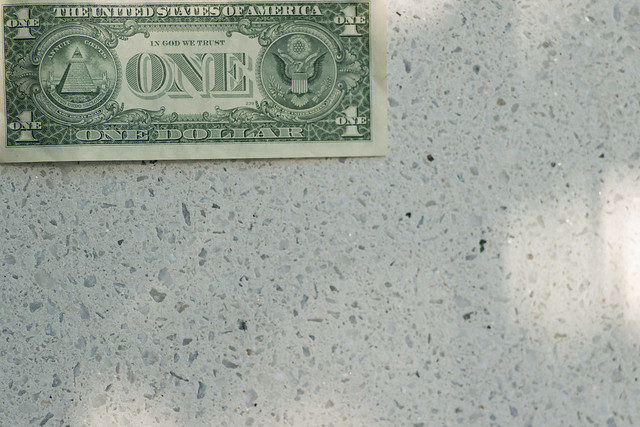
(Linked to full size image, 10MB download. Edit: And since we're on a new page: STF, Sony A900 full frame, wide open)
Last edited by Arkku on Tue Jul 29, 2014 6:41 pm; edited 1 time in total |
|
| Back to top |
|
 |
scsambrook


Joined: 29 Mar 2009
Posts: 2167
Location: Glasgow Scotland
Expire: 2011-11-18
|
 Posted: Tue Jul 29, 2014 11:48 am Post subject: Posted: Tue Jul 29, 2014 11:48 am Post subject: |
 |
|
scsambrook wrote:
| Arkku wrote: |
| Gerald wrote: |
| Would you please post the full image (even if downsized)? |
Here's the full image, but it's quite pointless other than to see the scale of things, since only the cropped corner is focus (easier to hit focus without live view when the subject is facing the camera at an angle): |
Arkku - I think Gerald's point was probably that he wanted to make sure your picture really was from the corner . . .
_________________
Stephen
Equipment: Pentax DSLR for casual shooting, Lumix G1 and Fuji XE-1 for playing with old lenses, and Leica M8 because I still like the optical rangefinder system. |
|
| Back to top |
|
 |
Pontus


Joined: 18 Dec 2011
Posts: 1471
Location: Jakobstad, Finland
Expire: 2016-08-25
|
 Posted: Tue Jul 29, 2014 11:57 am Post subject: Posted: Tue Jul 29, 2014 11:57 am Post subject: |
 |
|
Pontus wrote:
That is more than sharp enough for me. And I never experienced corner softness with my copy either.
_________________
Follow this link for my FOR SALE list (partially updated 19.11.2015) |
|
| Back to top |
|
 |
iangreenhalgh1


Joined: 18 Mar 2011
Posts: 15685
Expire: 2014-01-07
|
 Posted: Tue Jul 29, 2014 12:27 pm Post subject: Posted: Tue Jul 29, 2014 12:27 pm Post subject: |
 |
|
iangreenhalgh1 wrote:
Corner softness is very much a non-issue with many shots.
_________________
I don't care who designed it, who made it or what country it comes from - I just enjoy using it! |
|
| Back to top |
|
 |
Gerald


Joined: 25 Mar 2014
Posts: 1196
Location: Brazil
|
 Posted: Tue Jul 29, 2014 7:21 pm Post subject: Posted: Tue Jul 29, 2014 7:21 pm Post subject: |
 |
|
Gerald wrote:
| scsambrook wrote: |
| Arkku - I think Gerald's point was probably that he wanted to make sure your picture really [b]was from the corner . . . |
I did not doubt the words of Arkku. I just wanted to know the exact reproduction scale he had used. In principle it would be possible to deduce the scale through the crop, but it seems the forum software automatically resizes large images to 1024 pixels wide, what complicates to figure out what scale was really used.
| Arkku wrote: |
| My personal conclusion: no worries about corner sharpness for me. |
I agree. The corner sharpness is much better, for example, than the samples from the test by Kurt Munger. Why such a difference in performance? I don't know, but an obvious difference in the test procedures was that in the test conducted by Arkku, the focus distance was about 1m, while Munger tested for infinity.
The Sony STF lens is an Ernostar type, a highly asymmetrical optical structure of quite variable performance with focus distance. It is possible that the Sony STF was optimized for very close distances (1 to 2 meters) at a loss of performance for longer distances.
Unfortunately I do not have a Sony STF lens to clarify those doubts, but I did some tests with a few lenses I own in order to get a better idea about the level of performance of the Sony STF. I tested using the same reproduction scale used by Arkku. The RAW images were converted with ACR with basic settings. There was some variation in exposure and white balance because I did not make a special effort to equalize the results. The camera used was a full-frame with 24MP (Sony A99) so the 100% crops are comparable.
Sony 135mm T4.5 STF versus Pentacon 135mm F2.8
The first comparison was with a pedestrian Pentacon 135mm F2.8, which is a good 135mm lens for general use. The Pentacon minimum focus distance is 1.7m without accessories, so I had to use an extension ring to focus to approximately 1m.
Sony 135mm T4.5 STF at T4.5:

Pentacon 135mm F2.8 at F2.8:

Pentacon 135mm F2.8 at F4:

Comments:
1. No doubt the Sony STF was sharper than the Pentacon in this test. The details are there, but the images produced by the Pentacon are hindered by oblique spherical aberration and coma. The images produced by the Sony STF are cleaner, even though sharpness is not outstanding.
2. The Pentacon 135mm worked as an improvised macro lens, which is not the strong point of an Ernostar-type lens optimized for infinity. Macro lenses typically use a highly symmetrical optical formula, whose performance is much less sensitive to the focus distance.
3. The Pentacon 135mm was probably optimized for infinity, but as the design is also of Ernostar type, the Pentacon worked far below its capabilities in the test.
Sony 135mm T4.5 STF versus CZJ Biometar 120m F2.8
The CZJ 120mm F2.8 Biometar has a focal length that is not too different from the Sony STF 135mm T4.5 so the comparison is valid provided the same reproduction scale is used. As in the case of Pentacon 135mm, an extension tube had to be used for the required reproduction scale.
The CZJ Biometar is a lens which was originally designed for the medium-format Pentacon Six camera. This causes the CZJ to have a possible disadvantage when adapted to the format 135. When a lens is designed for a larger format, the optical designer attempts to correct the aberrations optimally over a larger area. Of course, if a lens which is optimized for a larger area, it tends to have lower performance than if the same optical formula were used to cover less area. Well that's the theory. Let's see how the practice is.
Sony 135mm T4.5 STF at T4.5:

CZJ Biometar 120mm F2.8 at F2.8:

CZJ Biometar 120mm F2.8 at F4:

CZJ Biometar 120mm F2.8 at F5.6:

CZJ Biometar 120mm F2.8 at F8:

Comments:
1. To my eyes, the CZJ Biometar is sharper than the Sony STF even when CZJ Biometar is at wide open. This result is somewhat surprising because the CZJ Biometar is medium-format lens, and its performance for infinity is not better than the Pentacon 135mm F2.8 also for infinity.
2. The CZJ Biometar is a double Gauss lens, which is a symmetrical configuration. That explains why the good performance maintains even for short focus distances.
3. The pictures for F5.6 and F8 were also included to show how performance varies with aperture. The peak performance occurs for F8, when the sharpness is uniform for the entire frame. It was not shown but from F8 the performance begins to drop due to diffraction.
_________________
If raindrops were perfect lenses, the rainbow did not exist. |
|
| Back to top |
|
 |
Ultrapix

Joined: 06 Jan 2012
Posts: 551
Location: Italy
|
 Posted: Tue Jul 29, 2014 9:58 pm Post subject: Posted: Tue Jul 29, 2014 9:58 pm Post subject: |
 |
|
Ultrapix wrote:
I hate to say that, but the first "bill test" is totally wrong if done in this way...
many lenses known for their corner weakness are only affected from field curvature... their corners are sharp, but at different distances!
a proper test needs a flat surface, perfectly parallel to the sensor, focused on center; then you'll know the outer areas performance...
Just my 2 cents |
|
| Back to top |
|
 |
Arkku


Joined: 28 Feb 2007
Posts: 1416
Location: Helsinki, Finland
|
 Posted: Tue Jul 29, 2014 10:30 pm Post subject: Posted: Tue Jul 29, 2014 10:30 pm Post subject: |
 |
|
Arkku wrote:
| Ultrapix wrote: |
I hate to say that, but the first "bill test" is totally wrong if done in this way...
many lenses known for their corner weakness are only affected from field curvature... their corners are sharp, but at different distances!
a proper test needs a flat surface, perfectly parallel to the sensor, focused on center; then you'll know the outer areas performance...
|
Yes, you are correct that field curvature can make focus in the corners different from the centre. However, there is no single �right� way to do the test: the test I did tells how sharp the subject can be made when it is in the corner, the test you describe tells how sharp the corner can be when the subject is in the centre. Of course the subject can extend from corner to centre, in which case lenses with high field curvature can not get the best sharpness throughout (on a flat subject), and the photographer has to choose where to focus. But many subjects (e.g., people's heads) are not flat surfaces, so field curvature may not matter, and it is even possible that in some cases field curvature is desirable (Minolta has made a lens with adjustable field curvature).
I think that ideally the maximum sharpness of each area should be tested by focusing on a subject in that part of the frame, and then the field curvature tested separately. This answers both the question of maximum sharpness in a given area of the frame, and how much it may fall off due to curvature. I omitted the test of field curvature since I wanted to test corner sharpness only, and I do not have a good way of testing field curvature. This is also far more practical to test at home, since it is difficult and time-consuming to set up a proper test with a perfectly parallel and perfectly flat surface. Given that the DoF in this test was only some millimetres, I freely admit that I am not able to properly do the test you describe with this setup.
Anyhow, this test was mainly intended to satisfy my own curiosity. It has little practical impact on my use or opinion of the lens, since in all the photos I've ever taken with the lens corner sharpness is entirely irrelevant.
Last edited by Arkku on Tue Jul 29, 2014 10:40 pm; edited 1 time in total |
|
| Back to top |
|
 |
Ultrapix

Joined: 06 Jan 2012
Posts: 551
Location: Italy
|
 Posted: Tue Jul 29, 2014 10:34 pm Post subject: Posted: Tue Jul 29, 2014 10:34 pm Post subject: |
 |
|
Ultrapix wrote:
| Arkku wrote: |
| Ultrapix wrote: |
I hate to say that, but the first "bill test" is totally wrong if done in this way...
many lenses known for their corner weakness are only affected from field curvature... their corners are sharp, but at different distances!
a proper test needs a flat surface, perfectly parallel to the sensor, focused on center; then you'll know the outer areas performance...
|
Yes, you are correct that field curvature can make focus in the corners different from the centre. However, there is no single �right� way to do the test: if you are focusing on an off-centre subject and want maximum sharpness there, then the test you describe would not tell you how sharp you can get that subject. Also, many subjects (e.g., people's heads) are not flat surfaces, so it is even possible that in some cases field curvature is desirable (Minolta has made a lens with adjustable field curvature).
I think that ideally the maximum sharpness of each area should be tested by focusing on a subject in that part of the frame, and then the field curvature tested separately. This is also far more practical to test at home, since it is difficult and time-consuming to set up a proper test with a perfectly parallel and perfectly flat surface. Given that the DoF in this test was only some millimetres, I freely admit that I am not able to properly do the test you describe with this setup.
Anyhow, this test was mainly intended to satisfy my own curiosity. It has little practical impact on my use or opinion of the lens, since in all the photos I've ever taken with the lens corner sharpness is entirely irrelevant. |
By this point of view, I totally agree  |
|
| Back to top |
|
 |
calvin83


Joined: 12 Apr 2009
Posts: 7553
Location: Hong Kong
|
 Posted: Wed Jul 30, 2014 3:44 am Post subject: Posted: Wed Jul 30, 2014 3:44 am Post subject: |
 |
|
calvin83 wrote:
Field curvature are vary by focus distance. The resolution of many lens does not drops suddenly but the field curvature makes the MTF drops suddenly. The test used by Arkku is a practical test showing the lens is capable deliver at the corner.
I won't surprise see the Biometar is better at the corner because it is a double Gauss with less field curve at the middle of the image circle. In my experience, many good double Gauss medium format lens performs good on a 35mm camera too.
_________________
https://lensfever.com/
https://www.instagram.com/_lens_fever/
The best lens is the one you have with you. |
|
| Back to top |
|
 |
Gerald


Joined: 25 Mar 2014
Posts: 1196
Location: Brazil
|
 Posted: Sun Aug 03, 2014 1:00 am Post subject: Posted: Sun Aug 03, 2014 1:00 am Post subject: |
 |
|
Gerald wrote:
In the previous comparative test with the Sony STF 135mm T4.5 it was necessary to add an extension ring for Pentacon 135mm F2.8 because the focusing distance was approximately 1m. The performance of the Pentacon was not very good, but as I have mentioned before, in these conditions the Pentacon was working in unfavorable conditions since its design was probably optimized for infinity, not for short distances.
The performance of lenses with very asymmetrical design as Sonnar, Ernostar, retrofocus, etc., usually degrades much when the focusing distance is very short. Would it mean a lens like the Pentacon 135mm cannot be used for close-range photography or macro- photography?
The answer is: A lens optimized for infinity can be efficiently used for short-distance photography and macro photography if used together a close-up lens of high quality. To prove that, I ran some tests using a 1.6 diopters Sigma achromatic close-up lens. I also took photos with an extension ring at the same reproduction scale to show the differences in performance. The differences in performance are larger in the corners, so the crops from the center were not shown. The focus was adjusted to the upper left corner.
Full image:

Pentacon 135mm F2.8 at F2.8 plus close-up lens � 100% crop:

Pentacon 135mm F2.8 at F4 plus close-up lens � 100% crop:

Pentacon 135mm F2.8 at F5.6 plus close-up lens � 100% crop:

Pentacon 135mm F2.8 at F8 plus close-up lens � 100% crop:

Pentacon 135mm F2.8 at F2.8 plus extension ring � 100% crop:

Pentacon 135mm F2.8 at F4 plus extension ring � 100% crop:

Pentacon 135mm F2.8 at F5.6 plus extension ring � 100% crop:

Pentacon 135mm F2.8 at F8 plus extension ring � 100% crop:

_________________
If raindrops were perfect lenses, the rainbow did not exist. |
|
| Back to top |
|
 |
|
|
